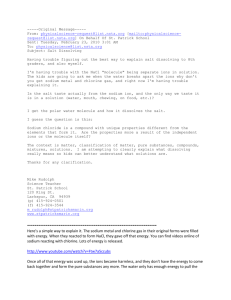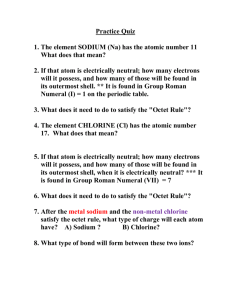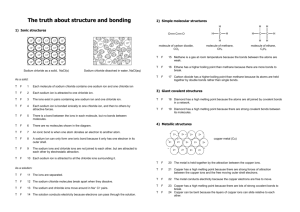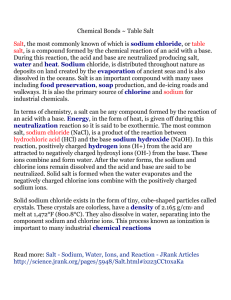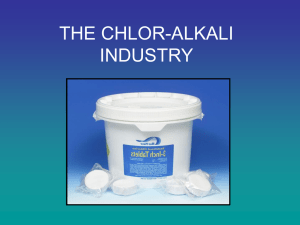Describe and draw diagrams for ionic bonding
advertisement
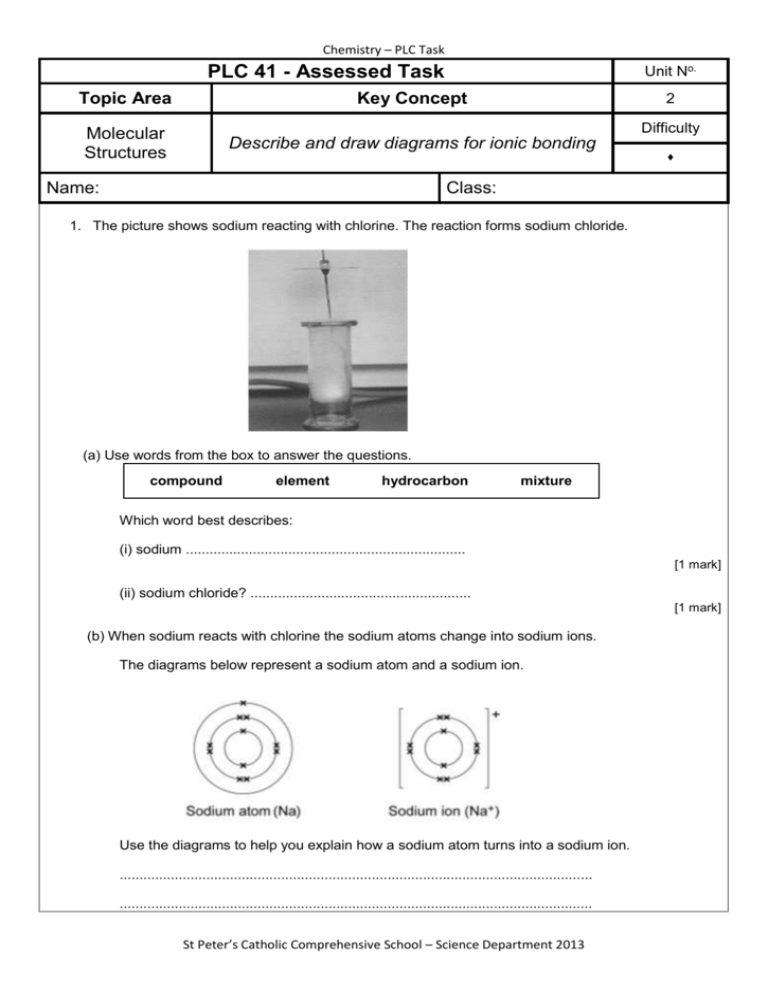
Chemistry – PLC Task PLC 41 - Assessed Task Unit No. Topic Area Key Concept Molecular Structures Describe and draw diagrams for ionic bonding 2 Difficulty Name: Class: 1. The picture shows sodium reacting with chlorine. The reaction forms sodium chloride. (a) Use words from the box to answer the questions. compound element hydrocarbon mixture Which word best describes: (i) sodium ....................................................................... [1 mark] (ii) sodium chloride? ........................................................ [1 mark] (b) When sodium reacts with chlorine the sodium atoms change into sodium ions. The diagrams below represent a sodium atom and a sodium ion. Use the diagrams to help you explain how a sodium atom turns into a sodium ion. ........................................................................................................................ ........................................................................................................................ St Peter’s Catholic Comprehensive School – Science Department 2013 Chemistry – PLC Task ........................................................................................................................ ........................................................................................................................ [2 marks] (c) (i) The diagram below represents a chlorine atom. When chlorine reacts with sodium the chlorine forms negative chloride ions. Complete the diagram below to show the outer electrons in a chloride ion (Cl–). [1 mark] (ii) Chloride ions are strongly attracted to sodium ions in sodium chloride. Explain why. ............................................................................................................... ............................................................................................................... [1 mark] 2. (a) A tin of red kidney beans contains calcium chloride as a firming agent. Calcium chloride is an ionic compound which contains calcium ions (Ca2+) and chloride ions (Cl– ). (i) The diagram on the left represents the electronic structure of a chlorine atom. St Peter’s Catholic Comprehensive School – Science Department 2013 Chemistry – PLC Task Complete a similar diagram on the right to represent a chloride ion. [2 marks] (ii) Explain how a calcium atom changes into a calcium ion which has a 2+ charge. ........................................................................................................................... ........................................................................................................................... ........................................................................................................................... ........................................................................................................................... [2 marks] Total Score Out of: Percentage Score 10 TIP – To Improve Progress How you can make further progress 0-39% = Practice Task 1 40-79% = Improvement Task 1 80%+ = Extension Task 1 St Peter’s Catholic Comprehensive School – Science Department 2013




